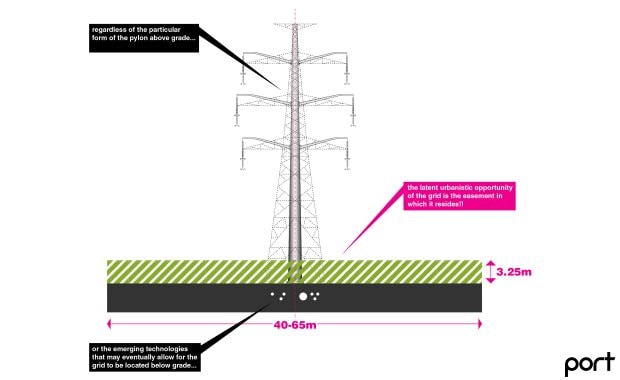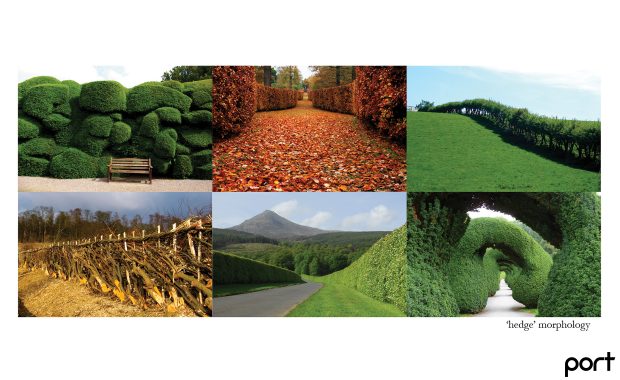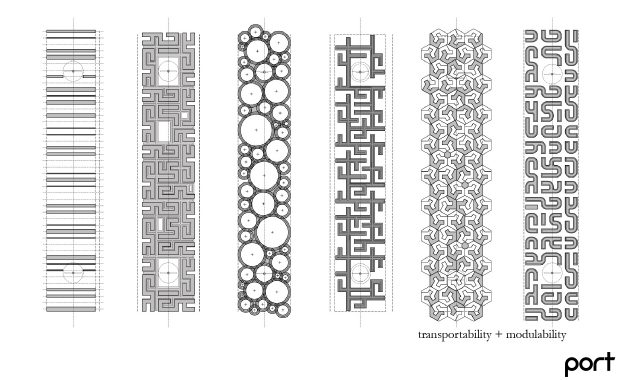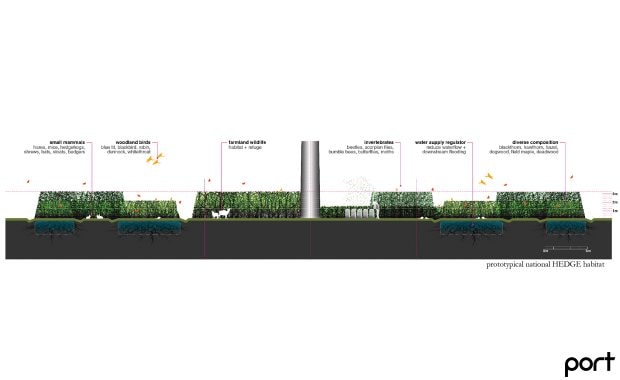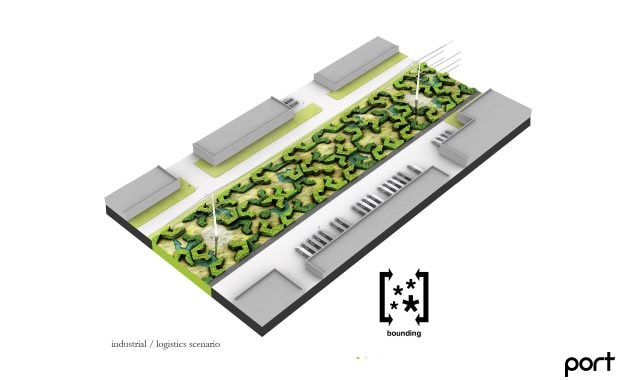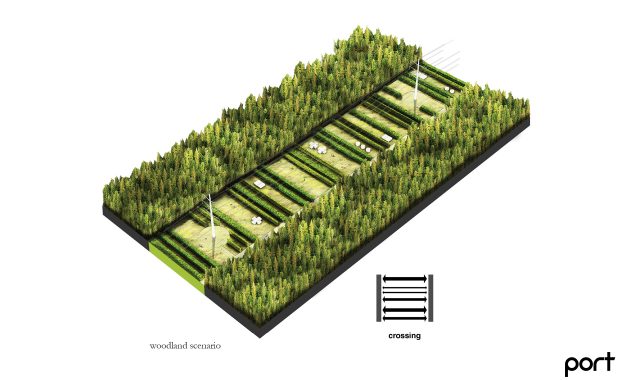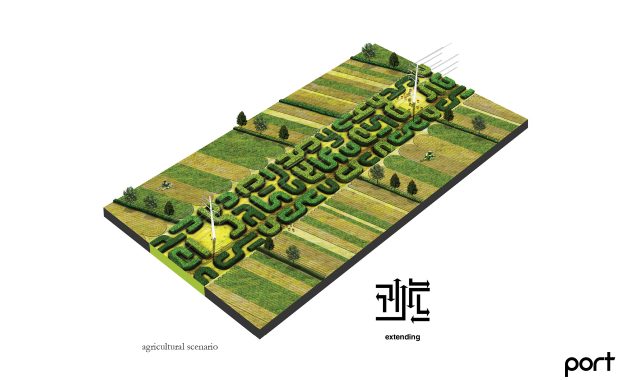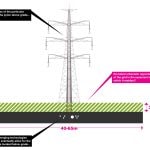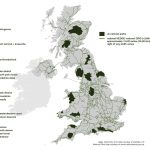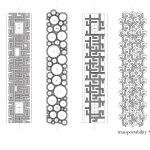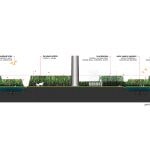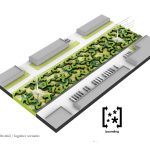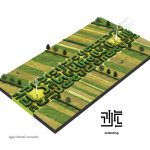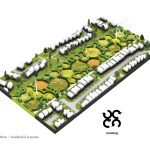Project: National HEDGE
Location: National electricity grid, United Kingdom
Designer: PORT Urbanism
Year: 2011
Website: http://porturbanism.com/work/national-hedge/
Project Description: Infrastructure that performs a single operation reflects a nineteenth-century approach to towards urbanization and misses the latent opportunities for synthesis and hybridization embedded within these already established network corridors. This project is a response to a call to redesign the traditional British electricity pylon. Instead of designing a new engineering object, we approached this opportunity as an occasion to fundamentally re-conceive the broader urbanistic role of the entire electricity grid across the British landscape, bundling ecological connectivity and habitat expansion with the necessary control and management of an elemental urban infrastructure system.
Our proposal imagines the iconic British hedgerow as a flexible, nationwide ecological-infrastructure regime. Deployed as a continuous, horizontal-thickened hedge complex in the right-of-ways and easements of existing and future electricity grid corridors, National HEDGE represents an integrated, progressive reinterpretation of a culturally significant system of territorialization capable of supporting substantial ecological expansion as well as offering a contemporary and iconic image of infrastructural integration into the landscape of the UK.
The intent is two-fold: First, is to integrate the electricity grid into the varied landscapes of the UK, not through formal exuberance or aesthetic mitigation, but through the compositing of seemingly oppositional landscape systems to create new, hybrid forms of urbanization. Second, is to reestablish a nationwide ecological regime that stitches together the fragmented natural habitats of the UK countryside by linking existing infrastructure easements and right of ways to the country’s most significant areas of natural preserve – the UK’s 15 National Parks.
British hedgerows represent a range of vernacular and ornamental variations – each reflecting distinct cultural, topographic, climatic and ecological conditions. We do not conceive of the National HEDGE as a monolithic entity. Rather, it is composed as a highly customizable ecological infrastructure that is capable of local calibration while maintaining robust performance across the network.
Hedges comprising native vegetation are recognized as a priority habitat for conservation action by the UK Biodiversity Action Plan (BAP). Representing a mix of woodland, scrub and grassland, hedgerows can accommodate a wide range of species and serve to facilitate migration at a landscape scale. Twenty-one BAP priority bird species are associated with hedgerows – thirteen of which reside primarily within hedge habitats.
The hedge complex will also serve to reduce the loss of agricultural soil from wind scouring and erosion. Additionally, hedgerows improve regional water quality by filtering fertilizers and pesticides found in agricultural run-off.
Given the scale and expanse of the national electricity network, the quantity of biomass that would constitute the National HEDGE complex is significant. Presently the UK has approximately 814,159km hedgerow coverage and 20,920km (13,000 mi) of electricity grid. The National HEDGE could constitute as much as a 51.4% increase in total hedgerow length with approximately 418,400 km of new hedgerow across the countryside. Conservative estimates suggest 600-800kg of CO2 sequestered within 1km of hedgerow per year for up to 20 years. Thus, the National HEDGE could reduce atmospheric carbon dioxide by anywhere from 251-million kg to 335-million kg per year – roughly equivalent to 45-59% of the total CO2 emitted by the UK and Crown dependencies in 2009.
In addition, the harvested material collected from the management of the hedge represents a substantial, continuously available source of woody biomass that could be converted into cellulosic ethanol and methanol without adversely impacting market pricing of other commodities.
Ultimately, the benefits of a hedgerow network of this scale are both significant and numerous: cultural heritage; landscape character and texture; control and maintenance of the grid corridor; employment generation through required management and maintenance; continuous source of biomass; carbon and greenhouse gas sequestration; wildlife habitat and refuge; soil and water management; support of UK Biodiversity Action Plan; and the creation of an iconic, integrated urban landscape system that can stand the test of time much like the electricity pylon itself.
This project was an entry in the Pylon Design Competition, hosted in 2011 by the Royal Institute of British Architects (RIBA) for the Department of Energy and Climate Change (DECC) and the National Grid.
| previous project | next project |
